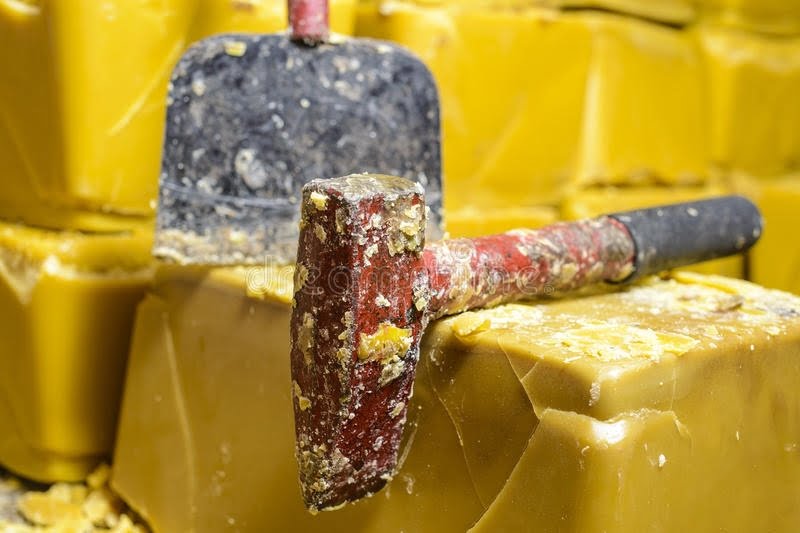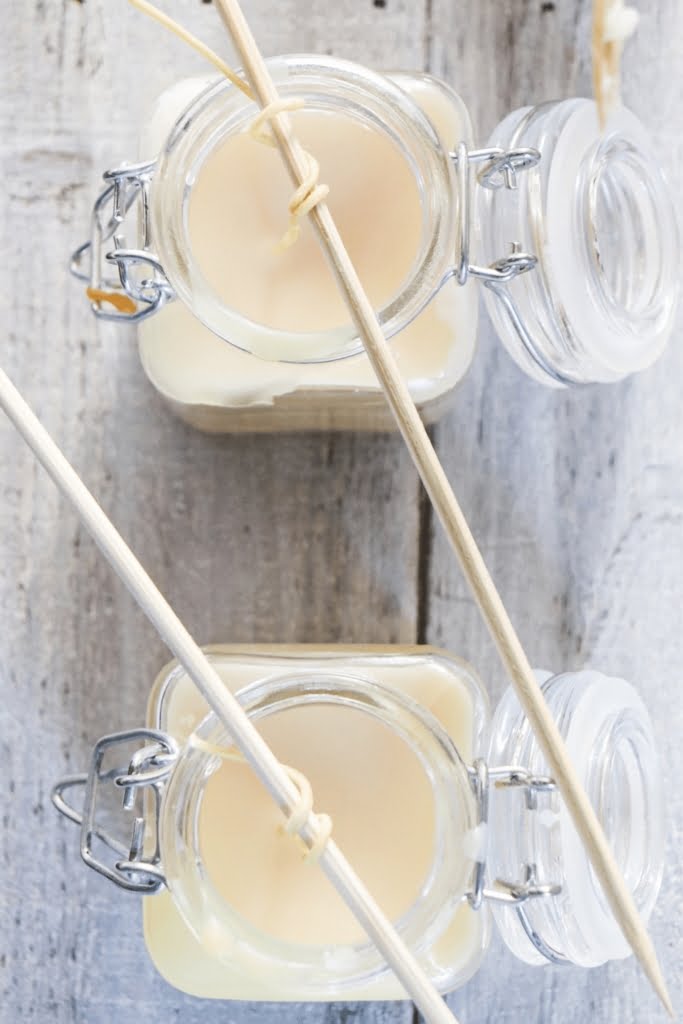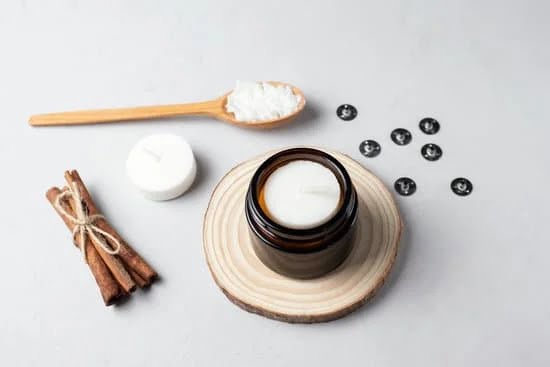Introduction to Candle Making Dyes and Fragrances
Candle making can be a fun and therapeutic activity. Once you have completed your candle base and chosen the type of wax that best suits your needs, the next step is choosing dye and fragrance for your candle. Dyes provide candles with vibrant colours so you can create a truly customized product. Fragrances are equally important as they offer the aromas of soothing lavender, fresh cut woods, fruity sensations, and so much more to make your candles smell incredible.
To start adding colour to your candles you need to choose a dye that is compatible with the wax used in candle making; different types of wax often require different types of dyes. This means that depending on what type of wax you have chosen, there may be fewer or more dyes available for you to use. Natural beeswax and coco-soy waxes are popular options among candle makers as they are environmentally friendly and encourage creativity when it comes to dyeing and scents. Both will require natural dyes such as activated charcoal or micas so that you get the perfect colour without compromising the quality of your candle flame.
In addition to choosing a compatible dye for your candles, you also need to decide on an appropriate fragrance oil. Candle fragrances come in a variety of combinations from alcoholic beverages like wine or rum to sweet desserts like apple pie or strawberry cupcakes & cookies! It’s important to remember not all fragrances are made equal; some oils may burn quickly without providing adequate vapors while others might linger too long or be far too strong if implemented improperly. Fragrance oil can also be combined with essential oils for an even more enhanced scent experience – although using essential oils takes much more practice and some trial & error before being able get the combination just right! Lastly keep in mind that when working with either type of oil, it is important to follow the instructions provided by manufacturers carefully so that there are no surprises after burning them in a lit wick!
Picking the Perfect Dye for Candle Making
One of the most important elements to consider when it comes to making candles is carefully selecting the right type of dye. Candle dyes are available in liquid, powder and pellet form, each with their own advantages and drawbacks. Liquid dyes offer intricate details, making them better for creating colorful designs and patterns. Powder dyes deliver bolder and brighter colors with excellent coverage, but may be a bit more difficult to disperse evenly in wax. Pellet dyes are also great for achieving bright results and tend to have lower concentrations of pigments, requiring less use and resulting in fewer color variations than powder or liquid dyes.
No matter which type of dye you chose, proper mixing techniques must always be used so that your blocks don’t separate or turn streaky during cooling. You’ll also need to factor in shrinkage rates because many types of dye concentrate can reduce the final volume of your candle wax when mixed with intense colorants such as phthalocyanine green pigment powder or methyl violet pigment powder. Additionally, there’s no way to guarantee an exact color match every time as some pigments absorb more heat than others, causing them to produce slightly different colors depending on the environment they were made in.
When it comes to fragrances, essential oils can provide a unique scent experience with aromatherapeutic benefits while synthetic scents leave little room for creativity due to their fixed composition. Keep in mind that you should always purchase high-quality fragrance oils from reputable suppliers as cheaper renditions often contain carrier agents that will affect your finished product’s color or texture. Lastly, when picking fragrances for your candles it’s important to understand flash points as certain scents can cause wax overheating during burning which can be detrimental both during production and consumption.
Using Natural Dyes for Candle Making
Candle making is a popular form of craft that requires the right supplies to craft your own custom creations. One of the most important aspects of candle making are the dyes and fragrances used to create candles with unique colours, scents, and shapes. Although there are commercial solutions available, natural dyes can also be employed for a more sustainable and cost-effective approach. Natural dyes come in many forms and as such can be used as alternatives for any variety of types for waxes (paraffin, beeswax, soy etc). These include plant extracts like turmeric or paprika powder which infuse colour into the melted wax and impart an earthy aroma; mineral pigments; annatto seeds; botanicals; activated charcoal; and even chopped fruits like freeze-dried blueberries which add a pop of colour to scented creations.
Fragrance oils are essential ingredients when it comes to creating fragrant candles. Additionally, natural essential oils are beneficial in drawing out pleasant aromas from your candles. Popular choices range from citrusy blends to woodsy notes like sandalwood or cedarwood oil”and provide additional therapeutic properties that store bought equivalents may not offer. Experimenting with different blends allows you to customize your creations according to personal preferences in scent pairings. Essential oils also work well when layering multiple fragrances together since they typically consist of organic ingredients that interact well with each other”producing delightful combinations free from harsh chemicals found in store brands. With these tools and creative approaches at your disposal, candle making takes on a whole new level of customization that will surely bring about stunning results!
Discovering Different Candle Making Fragrances
One of the most exciting aspects of candle making is exploring all the different wax fragrances that can be used to create customized candles. From traditional scents like lavender and vanilla, to unique combinations like citrus cake and honey almond, there is always something new and interesting to try. Candle makers love experimenting with different fragrance combinations to find new ways to craft beautiful scented candles for themselves and their customers. And by combining candle making dyes with these scents, it’s possible to give every candle its own distinct look as well. Taking advantage of the many colors and scents available means you can create colorful, intricate patterns throughout your candle wicks or concentrate shades in one area for added effect. It’s possible to match aromas with complementary colors or explore bold options like pink whipped cream and blueberry jam”the possibilities are endless! No matter what you decide, a wide range of wax fragrances and dyes will ensure you bring your visions to reality.
Creating Your Own Customized Fragrance Blend
When it comes to candle making dyes and fragrances, it can be difficult to decide what combinations of these two elements will yield the best result. But if you want to create a unique fragrance blend for your candles, there are a few tips you should follow.
One great tip is to select scents that complement each other. For example, if you are using floral-scented oils in your candles, opt for lighter or sweeter smells such as lavender and citrus or rose and vanilla. This way, neither scent will overpower the overall fragrance of the candle. You can also mix different woods and spices together in order to achieve unique notes with depth. Try mixing earthy base notes like sandalwood or cedarwood with spicy top notes like clove or bay leaf for a richly fragrant candle experience.
Another helpful tip is to experiment with different ratios of scent to ensure adequate coverage throughout your entire product line, especially if you are selling them online. Because customers often can’t smell your wax without actually purchasing it, testing the effectiveness at various ratios can help make sure that each customer is getting ample scent per candle. Additionally, blending various percentages of oils allows you to create signature scents across all your products without being overly repetitive from batch to batch.
Finally, have fun! While utilizing quality materials in efficient proportions is important for creating successful customized fragrances, don’t forget that experimentation is key when it comes to finding perfect aromatic blends tailored specifically to you and your brand’s needs!
Tips and Tricks for Selecting Candle Making Fragrances
When it comes to candle making, one of the most enjoyable aspects is picking out just the right fragrance to enhance your desired aromatherapy effects. Fortunately, there is an abundance of scented oils on the market specifically designed for making candles in a range of colors, fragrances and sizes! Before embarking on your candle making journey, it’s important to do a bit of research so that you can make an informed decision about which fragrance and/or dye choices will best suit your needs and desired results.
One tip when selecting fragrances is to consider the season. For example, if you’re creating a spring-scented candle, choose fresh and light scents such as citrus, floral or herbal notes. In contrast, heavier fragrances such as woody or spicy essences are more suited for autumnal candles. Additionally, it may be helpful to think back to experiences you’ve had and use them as a reference point when selecting your aromatic components ” did hiking through the woods leave you with a wonderful smoky scent memory? Was walking through a lavender field something you found calming? Choosing scents that have already been pleasing to you may help guarantee success!
Furthermore before committing to any scent combinations it’s prudent to mix oil samples together on paper towels or in disposable containers so you can smell test the blends ” this will particularly come in handy if using multiple essential oils in your creation. Sometimes ingredients that individually smell amazing don’t work well when mixed together – trial and error is key here! And if mixing unique perfume style recipes together isn’t high up on your list of interests then simply search for pre-blended fragrance blends with compatible pairings. Moreover if using natural dyes be aware that some dyes absorb aromas better than use others – these include polyester powered waxes or beeswax both of which take flavours readily but burn slower than more conventional options. All said once armed with knowledge regarding colours and smells your candle creations should be nothing short of dazzlingly fragrant works of art!
Incorporating Essential Oils into Your Candle Making Fragrance
Essential oils are concentrated, powerful fragrant liquids extracted from plant sources. Essential oils have unique components that make them ideal for adding to candles. Additionally, these components may evaporate faster than other liquid fragrances and therefore more scent is quickly released when the candle burns. When using essential oils in candle making, it is important to be aware of their therapeutic properties as some scents can be quite potent and too much can cause headaches or other reactions. It is best to start out with small amounts and build up the aroma until you achieve the desired effect.
In addition to natural essential oils, there are a variety of synthetic fragrance blends created specifically for use in candles. The added scents of these fragrances help to create complexity and an overall richer aroma. Scents like jasmine or musk may be difficult to obtain naturally with essential oils while they are readily available within synthetic fragrances. By combining both of these types of aromas, a unique combination can be developed resulting in beautiful smelling ,custom-made candles that will leave your home smelling great!
Adding color dyes to your wax prior to pouring can greatly enhance the beauty of any finished candle. While pure white wax does not have its own color, it easily absorbs any coloration you choose to add for a vibrant appeal. Dyes come in liquid form and are formulated especially for use with paraffin wax and soy waxes as some dyes will fade or discolor with certain types of waxes . Special care should be taken when selecting which dyes you want to add as dyeing using oils or wax crayons may cause smoke problems during burning or damage the wick if spilled directly onto it!
Health Benefits of Aromatherapy and Natural Candle Making
Candle making with all-natural dyes and fragrances can provide many health benefits as aromatherapy. Aromatherapy is the practice of utilizing natural essential oils to create scents that are believed to have healing effects on the body and mind. Essential oils are distilled from plants in order to capture their beneficial properties, such as relaxation, focus, energy or stress relief. Natural fragrances and dyes can help people improve their physical and mental health by soothing headaches, easing period cramps, decreasing anxiety, improving sleep and encouraging positive moods.
Candle makers also have an array of wonderful natural dyes to choose from in order to add colour for a personal touch. The wide selection available includes carrot seeds for orange hues, walnut husks for brown tones, alkanet roots for pink shades and more. The heat from the flame of the candle helps to diffuse the natural scent of whichever essential oil has been used – this allows us to benefit from its therapeutic qualities without having direct contact with it. Furthermore ,it can be beneficial to our environment as natural candles don’t release as many chemicals than synthetic ones do when burning. Lastly, another great perk is that unlike man-made products they are much safer due to not containing any nasty toxins or carcinogenic materials linked with other chemical additives.
Crafting Beautiful and Aromatically Pleasing Candles
Candle making dyes and fragrances can help make ordinary candles into something special. Candle makers often use different dyes to create interesting colors, or use multiple colors blended together to create unique designs. The amount and type of dye used will depend on the size and type of candle being designed. Fragrance oils are also used in the candle-making process to provide a pleasant scent once it’s lit. Typically, fragrance is added either before or after the wax has reached its melting point depending on the desired result. Fragrance oils range from light floral scents to more robust aromas such as cinnamon and apple spice. The selection is practically endless and allows each craftsperson to have a degree of creative control over their candles. In addition, some natural oils such as rosemary, lavender, and peppermint, may also be considered for naturally aromatic candles that do not rely solely on synthetic fragrances or essential oils but leaving room for one or both types of oil if desired. Colorful creations filled with activated scents become beautiful works of art when crafted by an experienced hand whether it be beeswax candles, soy wax pillars, tapers, jars, or votive holders. Candle making dyes and fragrances bring life, personality, and beauty all into one with the addition of visually appealing colors along with warming aromas that fill any space intended for soothing relaxation purposes or personal reflection.
Unique Ideas for Combining Themed Fragrances and Dyes
Candle making, while enjoyable and creative, also requires a certain amount of knowledge and understanding when it comes to the combination of different fragrances and dyes. With so many options available, you can easily customize the theme of your candle by combining carefully chosen color swatches, flavorings, and scent notes. Here are some ideas for how you can bring together your own themed fragrances and dyes for unique custom candles:
1. Create a beautiful romantic affair with soft shades of pastel such as pink or lavender combined with subtle floral aromas like rose or jasmine. Finish with a hint of musky amber or sandalwood for an alluring blend of mysterious scents.
2. For a warm summer day at the beach, combine bright colors like yellow and blue with briny sea salt, citrusy essential oils like lemon or lime, aromatic herbs such as lemongrass or basil, and woody scents like cedarwood or pine needle oil.
3. Gather rustic charm with earthy colors such as green combined with earthy sweet scents like vanilla bean, apple blossom, maple syrup, and pumpkin spice blends.
4. For a cozy winter night in the woods, choose dark colors like deep purple to create a midnight sky effect combined with minty menthol fresheners like eucalyptus or peppermint over base notes of smoky birchwood and warming spices like cinnamon or clove bud oil.
No matter which fragrance note combinations you decide on ” always remember that the key is to find harmony between colors and fragrances for balance that will ultimately result in truly unique candles!
Popular Candle Making Techniques Used Today
Candle making techniques have been around for centuries, and many of the techniques used today are tried and true methods perfected through time. From using natural dyes to add color to your candles to adding special fragrances to make them smell amazing, there is an artistry behind each contraption. Popular candle making techniques today include container candle pouring, molding and dipping, sheet wax overlay, and layering. Each of these will provide a unique look and potentially different burning characteristics.
Container Candle Pouring involves the process of pouring wax into containers like mason jars or other reusable glass or tin vessels. This is one of the most popular and traditional types of candle making with easy access to all supplies needed. You also have control over the shape this candle will take.
Molding and Dipping utilizes pre-formed molds that are filled with layers of soft wax which are then left to harden until they can be released from the mold in one piece. With controlled shapes and surfaces you can create beautiful two-toned layered tapers with unusual patterns or fruits designs when dipping into fresh fruit shaped molds.
Sheet Wax Overlay requires applying a thin layer of hot poured wax onto already established molded candles as a decorative topping detail. This wax should be thin enough not to interfere with your existing design but can still give unique visual effects with beautiful detailing due to its malleable nature while it’s still hot.
Layering is a complicated technique requiring multiple steps but provides big rewards if done correctly, creating gorgeous multi-colored pillar, votive, and taper candles blending various colors via dripping or other decoration application techniques. Layering is fun creative way for those who want their projects to stand out from the crowd!
How to Design and Package Pretty Candles
When it comes to making a successful candle, two of the most important elements to consider are dyes and fragrances. Candle makers can choose from various types of dye and fragrances depending on their desired scent or look. Wax makes up the majority of what a candle is composed of ” so it is important that makers use safe dyes designed specifically for wax. Candle makers should also select wax compatible fragrances based on their experience in working with specific scents.
The packaging of candles should also be taken into consideration when designing one ” as it adds to the overall perception and design aesthetic. Many consumers make buying decisions based on how attractive a product’s packaging looks, so its important for makers to make their products stand out from the rest! For starters, using colourful and eye-catching labels on containers can attract buyers’ attention. Additionally, adding pictures or illustrations on the containers adds an interesting visual element that makes a candle more pleasing to view! It is also helpful to include information about the ingredients used in making the particular product, such as what type of dye and fragrance were used, as this will give potential buyers further understanding about what kind of products they are buying. Finally, wrapping your candle with some form of protection paper will add not only appealing aesthetics but offers a degree of protection when being delivered to customers.
Conclusion
Candle making is an enjoyable and fulfilling activity. With the right candle making dyes and fragrances, you can create beautiful candles with a wonderful aroma. Take the time to select high-quality dyes and fragrances that comply with safety guidelines to ensure your candles are not only elegant but also safe. Strive for excellence in the craftsmanship of your candles, using quality products that will produce vibrant colors, long-lasting aromas, and reliable performance. Always remember to make note of how much dye it takes to achieve your desired shade as well as any other learnings each candle teaches you in order to repeat successful recipes. In keeping with careful use of materials, practice caution when handling items such as melted wax which can be hot enough to cause third degree burns. With care and consideration, you can craft beautiful and fragrant candles that evoke emotion for those people who light them.

Welcome to my candle making blog! In this blog, I will be sharing my tips and tricks for making candles. I will also be sharing some of my favorite recipes.





